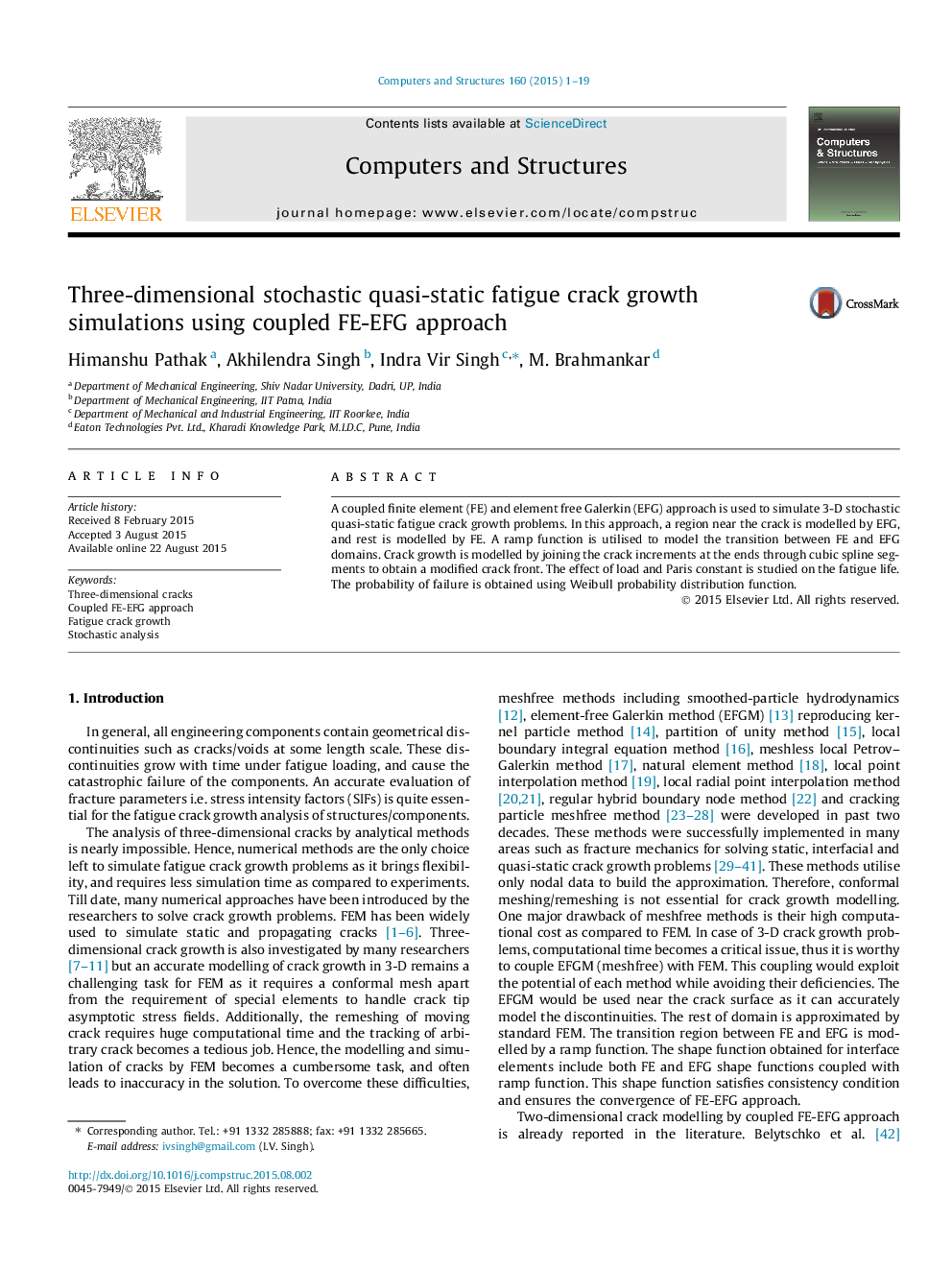| Article ID | Journal | Published Year | Pages | File Type |
|---|---|---|---|---|
| 509641 | Computers & Structures | 2015 | 19 Pages |
•Coupled FE-EFG approach is used to simulate 3-D quasi-static fatigue crack growth problems.•CPU time required by coupled approach is quite small as compared to XEFGM.•Failure probability increases with the increase in magnitude of applied load and Paris constant.•Fatigue life decreases with the increase in magnitude of applied load and Paris constant.•Probability of failure is found more for higher fatigue cycles.
A coupled finite element (FE) and element free Galerkin (EFG) approach is used to simulate 3-D stochastic quasi-static fatigue crack growth problems. In this approach, a region near the crack is modelled by EFG, and rest is modelled by FE. A ramp function is utilised to model the transition between FE and EFG domains. Crack growth is modelled by joining the crack increments at the ends through cubic spline segments to obtain a modified crack front. The effect of load and Paris constant is studied on the fatigue life. The probability of failure is obtained using Weibull probability distribution function.
